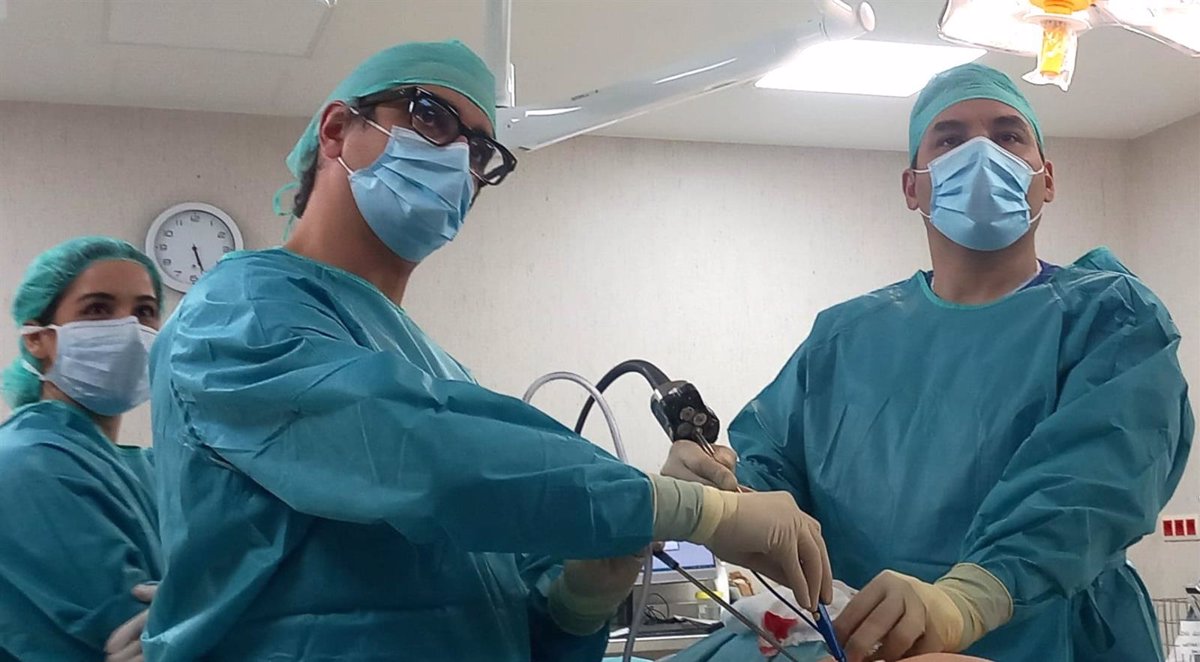MADRID 13 Nov. (EUROPA PRESS) –
The Ruber International Hospital has highlighted its “advanced” and “less invasive” robotic surgery technique for lung cancer, known as Uniportal VATs and Uniportal RATs, which allows it to provide “unmatched precision” thanks to 3D vision and its specific instruments. .
This technique allows complex tumors to be addressed through a single incision, which “remarkably” reduces the patient’s pain and recovery time, according to a statement from the clinic.
“Unlike the conventional robotic technique, which requires four or five incisions, with the uniportal robotic technique we make a single incision of three or four centimeters. This translates into less pain for the patient, better recovery and a lower rate of complications” , said Dr. Diego González Rivas, creator of the technique and introducer of it in the Madrid center.
For his part, the head of the Minimally Invasive Thoracic Surgery Unit at the Ruber International Hospital, Dr. Régulo Ávila, has stated that they have had “some very complex cases that in any other center would have made large incisions to be able to operate on them”, while In this center, interventions have been carried out “in a very safe and efficient manner” and “with extraordinary results”, since the patient was at home “after two or three days”.
TTFields (Tumor Treating Fields) are also another of the “pioneer” techniques carried out at the center, and consist of the administration of electrical currents that interfere with the basic survival mechanisms of cells. tumors.
To do this, adhesive electrodes are placed on the patient’s rib cage, which generate an electric field and act on these cells, slowing their division and growth. These electrodes are connected to a current generator that the patient must carry in a backpack for at least 18 hours a day, and it is a treatment that “is usually well tolerated and with few side effects.”
The technique, which must first be evaluated by the responsible doctor, has demonstrated “effectiveness” in non-small cell lung cancer, the most common in Western countries, as well as in mesothelioma.
The Ruber International also has the stereotactic body radiotherapy system with the CyberKnife robotic system (SBRT), the “newest technology in robotic radiosurgery”, which allows tumors to be irradiated in mobile areas, such as the lung, with “sub-millimeter” precision and with high doses in few sessions.
“The treatment is faster and more comfortable, with sessions that now last less than 30 minutes, which is especially beneficial for patients with pain or breathing difficulties,” explained the head of the Radiation Oncology Service at Hospital Ruber Internacional, Dr. Aurora. Rodriguez.
SBRT has a robotic arm capable of following the movement of the tumor during irradiation, allowing stereotaxic body radiotherapy to be performed, a high-precision technique that can deliver “very high” doses of radiation, “never achieved in conventional radiotherapy” and with “minimal doses” in the surrounding healthy tissues, all in just a few sessions and without the need for invasive immobilization systems or hospitalization.
“In this way, it is not only possible to successfully treat certain lesions in areas such as the lung, but also others such as the brain, spine, lymph nodes, liver, pancreas, prostate or soft tissues,” he said. pointed out the radiation oncologist, specialist in lung cancer, breast cancer and head and neck tumors, Dr. Amalia Sotoca, specialized in radiosurgery with the Robotized Cyberknife system.
These types of treatments are supported by advanced imaging techniques, such as PET-CT, 4D CT or MRI, which allow professionals to define the irradiation volume with greater precision.


